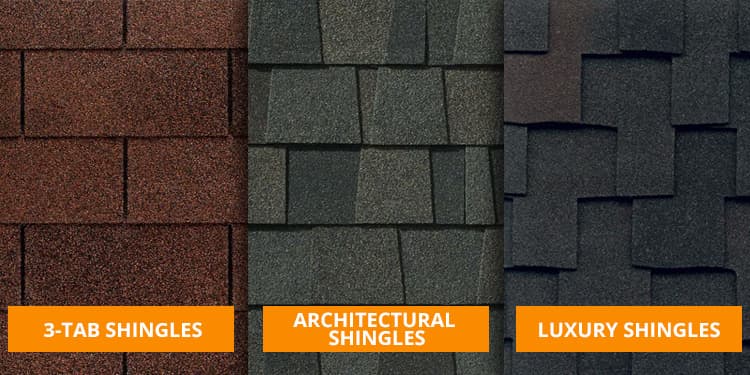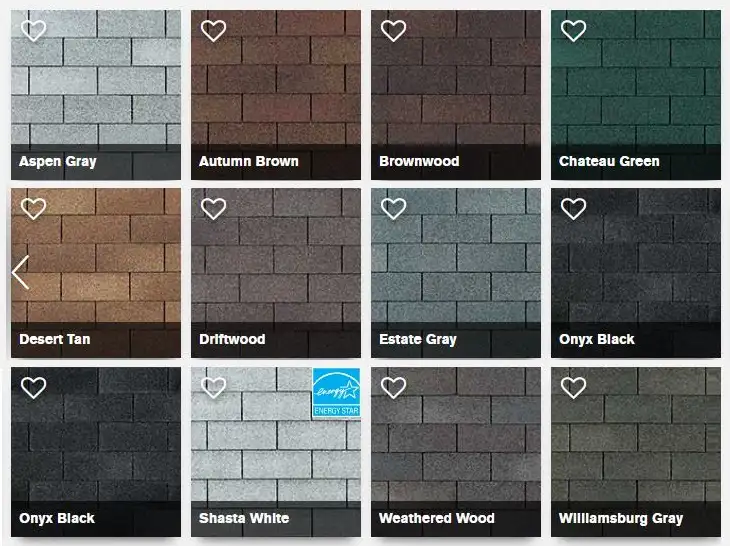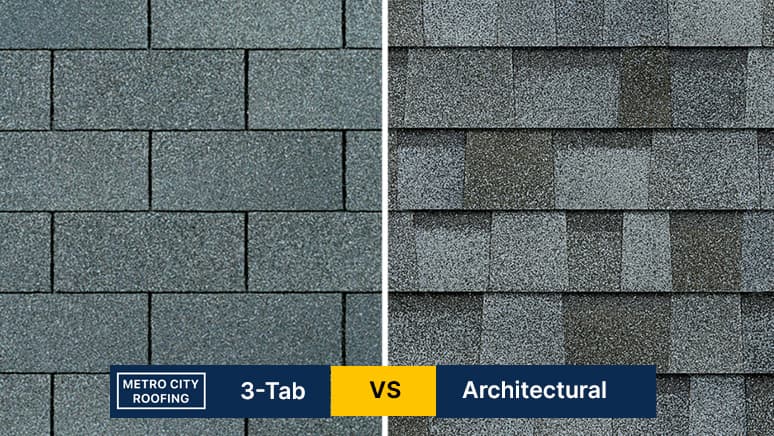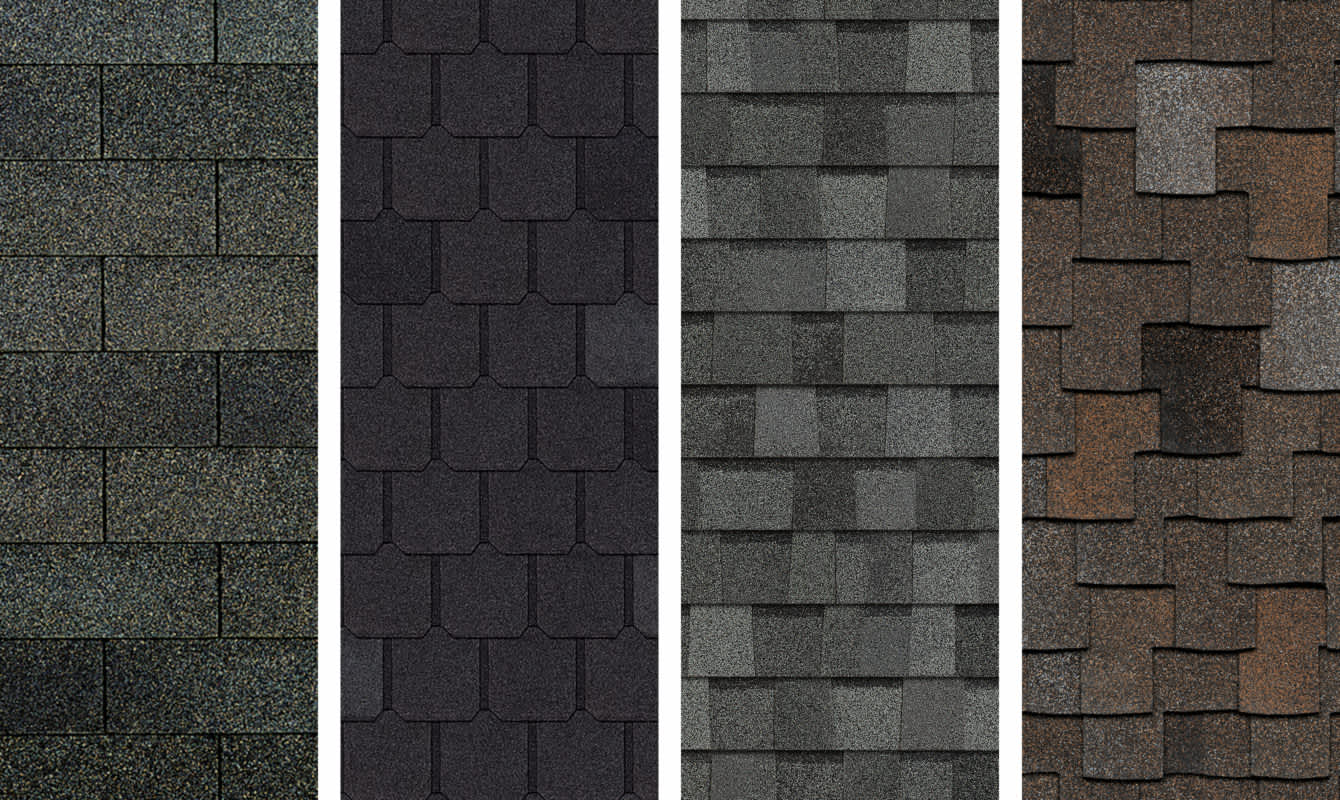When it comes to choosing the right shingles for your roofing project, it’s important to know the different options available to you. In this article, we’ll explore the three types of shingles commonly used in roofing. Whether you’re looking for durability, affordability, or aesthetics, understanding these shingle types will help you make an informed decision, ensuring a sturdy and stylish roof for your home. So let’s dive in and learn about the types of shingles that are commonly used in roofing projects.

Asphalt Shingles
Composition
Asphalt shingles are one of the most commonly used types of roofing shingles. They are composed of a base material, such as fiberglass or organic felt, which is coated with asphalt and then topped with ceramic granules. The base material provides durability and strength, while the asphalt layer offers waterproofing properties. Lastly, the ceramic granules add color and protect the shingles from harmful UV rays.
Advantages
One of the biggest advantages of asphalt shingles is their affordability. They are relatively inexpensive compared to other types of shingles, making them a popular choice among homeowners on a budget. Additionally, asphalt shingles come in a wide variety of colors and styles, allowing homeowners to choose the right look for their home.
Not only are asphalt shingles cost-effective, but they are also easy to install. They are lightweight and can be easily nailed down, which can save both time and money during the installation process. Furthermore, asphalt shingles require minimal maintenance. Regular inspections and occasional cleanings are typically sufficient to keep them in good condition.
Another advantage of asphalt shingles is their durability. They can withstand a wide range of weather conditions, including high winds, heavy rain, and even hail. Many asphalt shingles also come with a long warranty, providing homeowners with peace of mind.
Disadvantages
While asphalt shingles have many advantages, it is important to note their limitations as well. One of the main disadvantages is their lifespan. Compared to other types of shingles, asphalt shingles have a relatively shorter lifespan, typically ranging from 15 to 30 years. This means that homeowners may need to replace them more frequently, increasing the long-term cost of ownership.
In addition, asphalt shingles are not as eco-friendly as some other options. They are made from petroleum-based materials, which are not renewable or sustainable. This can be a concern for environmentally conscious homeowners who prioritize eco-friendly products.
Lastly, although asphalt shingles are durable, they are not as resistant to extreme temperature fluctuations as some other shingles. In areas with significant temperature variations, the constant expansion and contraction of the shingles may cause them to deteriorate more quickly.
Wood Shingles
Composition
Wood shingles, also known as wood shakes, are made from various types of wood, such as cedar, redwood, or pine. Each wood shingle is handcrafted from split logs, resulting in a unique and natural appearance. They are typically thicker than other types of shingles, providing added insulation and durability.
Advantages
One of the key advantages of wood shingles is their aesthetic appeal. They have a timeless beauty and add a rustic charm to any home. The natural variations in color and texture give each shingle a distinct character, creating a unique look that cannot be replicated by other materials.
Wood shingles also provide excellent insulation properties. Their thickness helps to keep the interior of the home cooler in the summer and warmer in the winter. This can result in energy savings and increased comfort for homeowners.
Additionally, wood shingles are known for their longevity. With proper maintenance and regular treatments, they can last between 30 to 50 years, making them a durable and long-lasting roofing option. Some manufacturers even offer warranties for up to 50 years, providing homeowners with added peace of mind.
Disadvantages
Despite their appealing features, wood shingles have a few disadvantages that should be considered. One of the main concerns is their susceptibility to fire. Wood is a combustible material, making wood shingles more vulnerable to fires compared to other shingle materials. However, using fire-retardant treatments and ensuring proper installation with fire-resistant underlayments can help mitigate this risk.
Another drawback of wood shingles is their higher cost compared to some other options. They are generally more expensive upfront, and the costs of maintenance and treatments should also be taken into account.
Wood shingles require regular maintenance to prevent fungal growth, such as moss or mildew, and to protect against rotting or splitting. This includes periodic inspections, cleaning, and reapplication of preservatives or sealants. Failure to properly maintain wood shingles can lead to premature deterioration and costly repairs.
Metal Shingles
Composition
Metal shingles are typically made from aluminum, steel, or copper. They are manufactured in a variety of shapes and profiles, designed to resemble traditional roofing materials such as wood shakes, tiles, or slate. The metal shingles are coated with finishes or paints to enhance their appearance and durability.
Advantages
One of the main advantages of metal shingles is their exceptional durability. They can withstand severe weather conditions, including high winds, heavy rain, and even hail. Metal shingles are resistant to cracking, warping, or rotting, which can extend their lifespan significantly. They are also non-combustible, making them a safer choice for fire-prone areas.
Metal shingles are also known for their low maintenance requirements. Unlike some other materials, they do not require regular cleaning or treatments to prevent mold or algae growth. Occasional inspections and general maintenance, such as removal of debris, should be sufficient to keep the roof in good condition.
Additionally, metal shingles are energy-efficient. They reflect solar heat, reducing the amount of heat absorbed into the home. This can result in lower cooling costs during hot summer months. Some metal shingles are also designed with special coatings or insulation to further improve energy efficiency.
Disadvantages
One of the main disadvantages of metal shingles is their initial cost. They tend to be more expensive than asphalt or wood shingles, making them less accessible for homeowners on a tight budget. However, the long lifespan of metal shingles can offset the initial investment over time.
Metal shingles may also produce noise during rain or hailstorms, potentially causing discomfort for some homeowners. This can be mitigated by installing additional insulation or underlayment, which can dampen the noise and provide added insulation benefits.
Another consideration is the aesthetic appeal of metal shingles. While they come in various styles and finishes, some homeowners may prefer the natural look of other materials like wood or slate. However, advancements in design and technology have made metal shingles more visually appealing, offering a wider range of options for homeowners.
Tile Shingles
Composition
Tile shingles, commonly referred to as clay or concrete tiles, are made from natural clay or molded from concrete. They are available in various shapes, including flat, pantile, or Roman, and come in an array of colors. Tile shingles are characterized by their distinctive appearance and are often associated with Mediterranean or Spanish architectural styles.
Advantages
One of the advantages of tile shingles is their exceptional durability. They are known to withstand extreme weather conditions, including high winds, heavy rain, and even fire. In fact, many tile shingles meet the highest fire-resistance rating, providing homeowners with increased safety and peace of mind.
Tile shingles are also highly resistant to rotting or insect damage. Unlike organic materials, such as wood, tiles do not provide a food source for pests or decay. This can help prolong the lifespan of the roof and reduce the need for costly repairs or replacements.
Another advantage of tile shingles is their energy efficiency. They have excellent insulation properties and can help keep the interior of the home cooler in hot climates. This can result in energy savings and reduced cooling costs.
Disadvantages
Despite their many advantages, tile shingles also have a few drawbacks. One of the main concerns is their weight. Tile shingles are significantly heavier than other types of shingles, such as asphalt or metal. This means that additional structural support may be required when installing tile shingles, which can increase the cost of the roofing project.
The installation process for tile shingles is also more complex and time-consuming compared to other materials. It requires specialized skills and expertise to ensure proper alignment and secure attachment. This can result in longer installation times and potentially higher labor costs.
Additionally, tile shingles are more fragile and prone to breakage compared to other materials. Walking on a tile roof can cause damage, and extra caution is required when performing maintenance or repairs. It is also important to note that not all roofs are suitable for tile shingles due to their weight and structural requirements.

Slate Shingles
Composition
Slate shingles are made from natural stone, specifically slate. They are thin sheets of rock that are carefully cut and shaped into shingles. Slate shingles offer a luxurious and elegant appearance and are highly regarded for their longevity.
Advantages
One of the biggest advantages of slate shingles is their exceptional durability. They have an impressive lifespan, often lasting over 100 years with proper installation and maintenance. This makes them a long-term investment that can last multiple generations and increases the value of a home.
Slate shingles are also highly resistant to fire and are considered one of the most fire-resistant roofing materials available. This can provide homeowners with increased safety and peace of mind, particularly in areas prone to wildfires.
In terms of aesthetics, slate shingles offer a timeless beauty and can enhance the overall appearance of a home. They come in a variety of colors, allowing homeowners to choose the perfect shade for their desired look. Additionally, the natural variations in the stone give each shingle a unique and exquisite character.
Disadvantages
One of the main disadvantages of slate shingles is their high cost. They are one of the most expensive roofing materials available, making them less accessible for homeowners on a tight budget. The cost of installation can also be higher due to the specialized skills and tools required to handle and install slate shingles.
Slate shingles are also heavy, similar to tile shingles, and may require additional structural support during installation. This can add complexity and cost to the roofing project. It is essential to consult with a professional to ensure proper installation and to assess the feasibility of using slate shingles on a specific roof.
Due to their weight and fragility, slate shingles can be challenging to repair or replace. The process often requires the expertise of a professional and can result in higher maintenance costs compared to other roofing materials.
Fiberglass Shingles
Composition
Fiberglass shingles are composed of a fiberglass mat that is coated with asphalt and then topped with ceramic granules. The fiberglass mat provides strength and stability to the shingles, while the asphalt layer offers waterproofing properties. The ceramic granules not only add color but also provide protection against UV rays.
Advantages
One of the advantages of fiberglass shingles is their lightweight nature. They are significantly lighter than other types of shingles, such as wood or slate, which can make installation easier and more cost-effective. The lightweight nature of fiberglass shingles also puts less stress on the roof structure.
Fiberglass shingles are known for their excellent fire resistance. They are non-combustible and have a high fire rating, providing homeowners with added safety and peace of mind. This makes them a desirable choice for areas prone to wildfires or other fire hazards.
Another advantage of fiberglass shingles is their durability. They can withstand various weather conditions, including high winds, heavy rain, and extreme temperatures. Fiberglass shingles are also resistant to rot, decay, and insect damage, which can help prolong their lifespan.
Disadvantages
Despite their advantages, fiberglass shingles also have certain disadvantages that should be considered. One of the main concerns is their higher cost compared to asphalt shingles. While they are more affordable than some premium options like slate or metal, fiberglass shingles may still be more expensive upfront compared to basic asphalt shingles.
Fiberglass shingles are not as eco-friendly as some other materials. They are made from petroleum-based products, which are not renewable or sustainable. This can be a consideration for homeowners who prioritize environmentally friendly products.
It is worth noting that fiberglass shingles may not have the same aesthetic appeal as some other materials like wood or slate. While they are available in various colors and styles, some homeowners may prefer the natural look and texture of organic materials. Nonetheless, advancements in design have made fiberglass shingles more visually appealing.
Rubber Shingles
Composition
Rubber shingles, also known as synthetic shingles, are made from recycled materials such as rubber or plastic. They are designed to resemble other roofing materials like wood shakes, slate, or tile. The recycled materials are processed to create a durable and flexible roofing option.
Advantages
One of the main advantages of rubber shingles is their exceptional durability. They are resistant to cracking, rotting, and insect damage, making them a long-lasting roofing choice. Additionally, rubber shingles are highly resistant to impact, which can be beneficial in areas prone to hailstorms or heavy winds.
Rubber shingles are also lightweight, similar to fiberglass shingles, which makes them relatively easy to install. They are often installed using a simple nailing or adhesive process, which can save time and cost during the installation process. The lightweight nature of rubber shingles also puts less stress on the roof structure.
Another advantage of rubber shingles is their low maintenance requirements. They do not require regular treatments or coatings to maintain their durability. Periodic inspections and occasional cleanings are typically sufficient to keep rubber shingles in good condition.
Disadvantages
One of the main disadvantages of rubber shingles is their higher initial cost compared to basic asphalt shingles. While they may be more affordable compared to premium options like slate or metal, the upfront cost of rubber shingles can still be a consideration for homeowners on a tight budget. However, the long lifespan and durability of rubber shingles can offset the initial investment over time.
The appearance of rubber shingles may be a concern for some homeowners. While they are designed to mimic the look of other materials, such as wood shakes or slate, some may prefer the authenticity of the real materials. Nonetheless, advancements in design have made rubber shingles more visually appealing, offering a wider range of options for homeowners.
It is important to note that rubber shingles may not be as fire-resistant as some other materials. While they generally have a higher fire rating compared to wood shingles, they may not provide the same level of fire protection as premium options like metal or slate. However, some rubber shingles are manufactured with fire-resistant additives to enhance their fire resistance.
Plastic Shingles
Composition
Plastic shingles, also known as polymer shingles, are made from various types of plastic, such as PVC or PET. They are manufactured using a molding process to create shingles that resemble other roofing materials like wood shakes or slate. Plastic shingles offer a lightweight and durable roofing solution.
Advantages
One of the main advantages of plastic shingles is their lightweight nature. They are significantly lighter than other types of shingles, making installation easier and more cost-effective. The lightweight nature of plastic shingles also puts less stress on the roof structure.
Plastic shingles are highly durable and resistant to cracking, warping, or rotting. They can withstand harsh weather conditions, including high winds, heavy rain, and extreme temperatures. Plastic shingles are also resistant to insect damage, providing homeowners with added peace of mind.
Additionally, plastic shingles are low maintenance. They do not require regular treatments or coatings to maintain their durability. Occasional inspections and general cleaning should be sufficient to keep plastic shingles in good condition.
Disadvantages
One of the main concerns with plastic shingles is their higher initial cost compared to basic asphalt shingles. While they may be more affordable than premium options like slate or metal, plastic shingles can still be more expensive upfront. However, the long lifespan and durability of plastic shingles can help offset the initial investment over time.
The aesthetic appeal of plastic shingles may also be a consideration for some homeowners. While they are designed to resemble other materials like wood shakes or slate, some may prefer the authenticity and natural look of the real materials. Nonetheless, advancements in design have made plastic shingles more visually appealing.
It is important to note that plastic shingles may not provide the same level of fire resistance as some other materials. While they generally have a higher fire rating compared to wood shingles, they may not offer the same level of fire protection as premium options like metal or slate. However, some plastic shingles are manufactured with fire-resistant additives to enhance their fire resistance.

Composite Shingles
Composition
Composite shingles are made from a combination of materials, such as fiberglass, recycled plastics, and various minerals. They are designed to mimic the appearance of other types of shingles like wood shakes or slate. The combination of materials creates a durable and versatile roofing solution.
Advantages
One of the main advantages of composite shingles is their versatility. They come in a wide variety of styles and colors, allowing homeowners to choose the perfect look for their home. Composite shingles can be designed to resemble other materials like wood shakes, slate, or tile, offering a range of options to suit different architectural styles.
Composite shingles are also easy to install, similar to other lightweight shingles. They can be nailed or stapled down, which can save time and labor costs during installation. The lightweight nature of composite shingles also puts less stress on the roof structure.
Additionally, composite shingles are highly durable and can withstand various weather conditions. They are resistant to cracking, warping, or rotting, providing homeowners with a long-lasting roofing solution. Composite shingles are also resistant to impact, making them suitable for areas prone to hailstorms or heavy winds.
Disadvantages
One of the main concerns with composite shingles is their higher initial cost compared to basic asphalt shingles. While they may be more affordable than premium options like slate or metal, the upfront cost of composite shingles can still be a consideration for homeowners on a tight budget. However, the long lifespan and durability of composite shingles can help offset the initial investment over time.
It is worth noting that composite shingles may not have the same authentic look and texture as real materials like wood or slate. While they are designed to resemble other types of shingles, some homeowners may prefer the natural variations and character of organic materials. Nonetheless, advancements in design have made composite shingles more visually appealing.
The environmental impact of composite shingles is also a consideration for some homeowners. While they may contain recycled materials, composite shingles are not as sustainable or eco-friendly as some other options. This can be a concern for those who prioritize environmentally friendly products.
Stone-coated Metal Shingles
Composition
Stone-coated metal shingles are made from metal panels that are coated with a layer of stone chips. The stone chips are adhered to the metal panels using a special adhesive. The combination of metal and stone creates a durable and aesthetically pleasing roofing solution.
Advantages
One of the main advantages of stone-coated metal shingles is their exceptional durability. They combine the strength and longevity of metal with the visual appeal of stone. Stone-coated metal shingles can withstand severe weather conditions, including high winds, heavy rain, and extreme temperatures. They are also highly resistant to cracking, warping, or rotting.
In terms of aesthetics, stone-coated metal shingles offer a unique and attractive look. The stone chips provide a textured appearance, mimicking the look of traditional roofing materials like wood shakes or slate. Stone-coated metal shingles are available in various colors and styles, allowing homeowners to achieve the desired look for their home.
Stone-coated metal shingles also provide energy efficiency benefits. The metal base reflects solar heat, reducing the amount of heat absorbed into the home. This can result in lower cooling costs during hot summer months. Additionally, the stone layer adds an extra layer of insulation, enhancing energy efficiency further.
Disadvantages
One of the main concerns with stone-coated metal shingles is their higher initial cost compared to basic asphalt shingles. While they may be more expensive upfront, stone-coated metal shingles offer long-term value and durability. The combination of metal and stone can help offset the initial investment over time.
Installation of stone-coated metal shingles may require professional expertise due to the specialized techniques and materials involved. This can add to the overall cost of the roofing project. It is important to consult with a professional to ensure proper installation and to assess the feasibility of using stone-coated metal shingles on a specific roof.
It is worth noting that stone-coated metal shingles may produce noise during heavy rain or hailstorms. This can potentially be a concern for some homeowners, particularly those with a lower tolerance for noise. However, advancements in design and insulation can help reduce the noise and provide added comfort.
In conclusion, there are a variety of shingle options available for homeowners to choose from when roofing their homes. Each type of shingle has its own unique composition, advantages, and disadvantages. Asphalt shingles are affordable, easy to install, and durable. Wood shingles offer a rustic charm and excellent insulation properties. Metal shingles are known for their durability, energy efficiency, and low maintenance requirements. Tile shingles provide exceptional durability, fire resistance, and energy efficiency. Slate shingles offer longevity, fire resistance, and timeless elegance. Fiberglass shingles are lightweight, fire-resistant, and durable. Rubber shingles are long-lasting, impact-resistant, and low maintenance. Plastic shingles provide versatility, durability, and a lightweight solution. Composite shingles offer a range of styles, durability, and easy installation. Stone-coated metal shingles combine the strength of metal with the aesthetics of stone, providing durability, energy efficiency, and an attractive appearance. Consider these factors when choosing the right shingle option for your home, weighing the advantages and disadvantages to make an informed decision.

